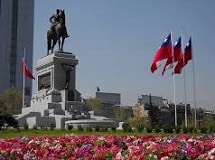 The concept of monument , which comes from the Latin word monumentum , has different uses. The term can be used to refer to the work that is installed in a public place with the aim of paying tribute to something or someone .
The concept of monument , which comes from the Latin word monumentum , has different uses. The term can be used to refer to the work that is installed in a public place with the aim of paying tribute to something or someone .
Statues , busts and other types of sculptures can be constituted as monuments when they function as a tribute to an eminent personality or as a memory of some event of great social importance.
The Obelisk of Buenos Aires is an example of a monument. It was built four hundred years after the first foundation of the city , carried out by Pedro de Mendoza in 1536 . This pillar with a pyramidal tip, designed by architect Alberto Prebisch , is located in the Plaza de la República and is a Buenos Aires icon.
A construction that stands out for its historical, cultural or artistic significance is also called a monument. The Eiffel Tower , in Paris ( France ), is one of the most famous monuments in the world . This iron structure that the architect Alexandre Gustave Eiffel erected for the Universal Exhibition that took place in 1889 became the main emblem of the French territory.
We cannot ignore Big Ben , the imposing 96-meter-high tower that millions of tourists admire in London every year. The tower's name is actually Elizabeth , while Big Ben is named after its enormous bell. Its construction took place in 1856 and it has become one of the most representative features of the city, along with the unique red buses, many of which have two floors.
In Barcelona we find the basilica called Sagrada Familia , by the acclaimed architect Antonio Gaudí . Its construction began in 1882, but has not yet been completed. This gives it a very particular mysticism , which is complemented by its engravings and ornamentation.
The Roman Colosseum is another world-famous monument. It is considered the greatest attraction of the Italian city. It dates back to the 1st century, but the passage of time has not taken away its magic: although it was the center of many acts of violence, lovers of architecture and history continue to be dazzled by admiring its tall columns.
It should be noted that there is also the notion of a natural monument . This is the name given to the region that, due to its great beauty or its ecological particularities, is protected by the State in order to ensure its conservation.
 The value of a natural monument is measured in several parameters, such as its historical, geological or landscape importance, among others. In fact, it can also have symbolic value. Some general examples of natural monuments are long-lived trees, caves, forests, and islands.
The value of a natural monument is measured in several parameters, such as its historical, geological or landscape importance, among others. In fact, it can also have symbolic value. Some general examples of natural monuments are long-lived trees, caves, forests, and islands.
In Spain, to cite one case, the natural monument is protected by law, as well as the reserves and natural parks. Depending on the powers that the State transfers to the autonomous communities , natural monuments can be national or regional.
The Millenary Drago , located in the Icod de los Vinos municipality, in Santa Cruz de Tenerife, is a well-known natural monument. It is a plant 18 meters high, with a trunk whose diameter at the base is around 20 meters. It has more than 300 main branches, abundant small flowers with six petals and a color with shades of green and yellow that make it very impressive.
In colloquial language, finally, a monument is mentioned as a man or woman who stands out for their attractive aesthetic appearance and physical qualities: “That model is a monument!” , “The heartthrob of the novel is a monument that always boasts of its muscles.”
